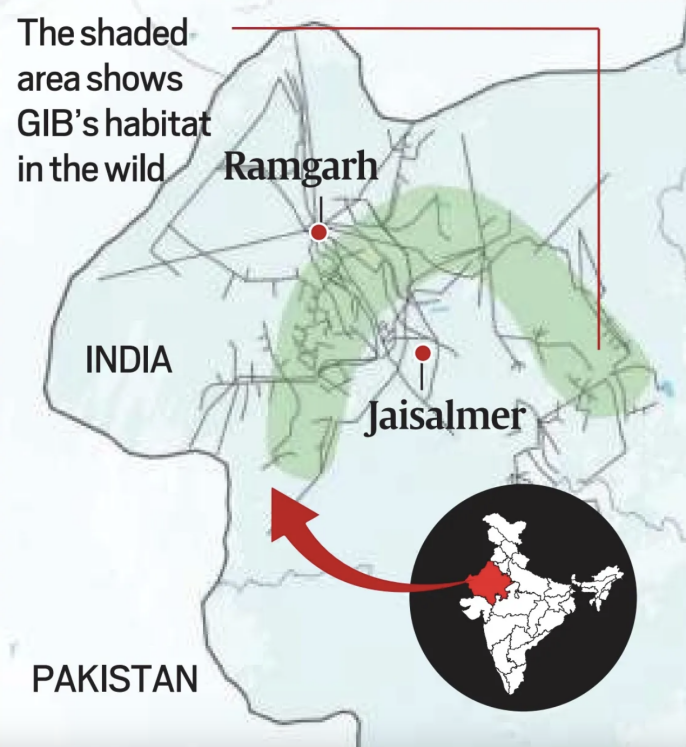Recently, the Compensatory Afforestation Fund Management and Planning Authority (CAMPA) has recently approved Rs 56 crore for the next phase of the conservation of Great Indian Bustard (GIB) and Lesser Florican.

|
Four Bustard Species in India |
|
Over the past four decades, the population of Great Indian Bustard has declined steadily from being in the range of 700 individuals to less than 150 as of today, as per the Rajasthan Forest Department.
The scientific reasoning behind creating a founder population is to have a minimum viable population to prevent the probability of extirpation of the captive population and to capture the genetic variability of the source population.
The WII has been collaborating with the Abu Dhabi-based International Fund for Houbara Conservation for the artificial insemination.
|
Conservation Breeding |
|